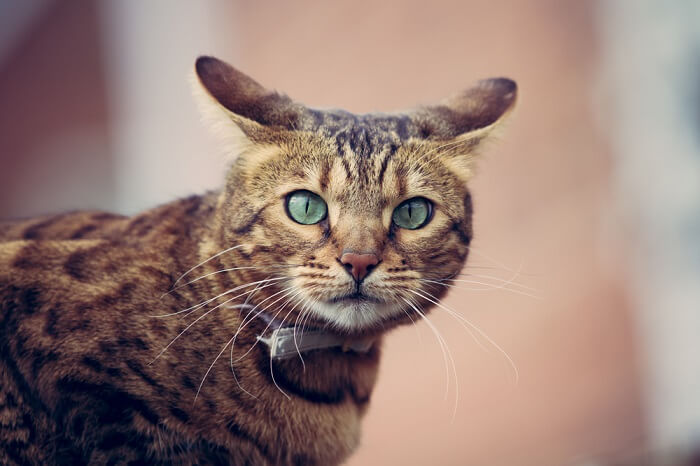
Animax is a brand name for a prescription topical ointment made by Dechra containing the drugs nystatin, neomycin sulfate, thiostrepton, and triamcinolone acetonide. Other brand names under different manufacturers for the same ointment ingredients include Panalog, Derma-Vet, and Quadritop.
Animax for Cats Overview

In this article you’ll learn about these ingredients, what they do, how this ointment is often used, potential side effects to watch for, and some frequently asked questions.
About Animax for Cats
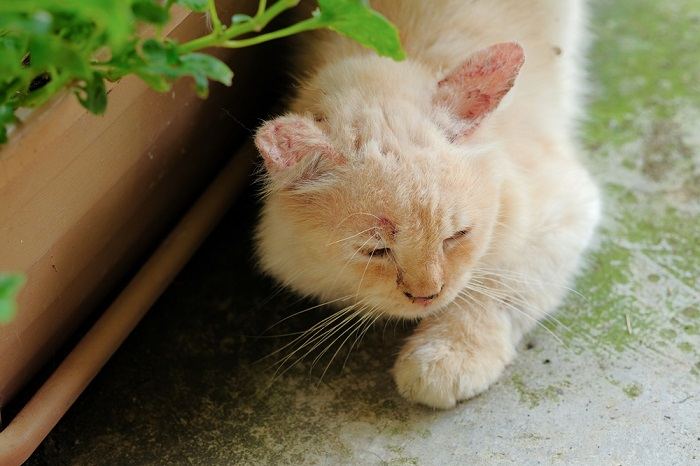
Animax is not intended for sole use against larger wounds or deep-seated infections, and should not be used with severe infections involving the middle or inner ear.
Ointments containing nystatin, neomycin sulfate, thiostrepton, and triamcinolone acetonide are commonly used in veterinary medicine for both cats and dogs to address inflammation, bacterial, and some fungal infections on the skin and in the ears.
Also Read: Cat Ear Infection: Causes, Symptoms, And Treatment
Animax ointment is a more loose and watery yellow-white ointment, making it ideal for applying to the ears where it can run deeper into the ear canal to address infections and inflammation, as well as providing a thin coat over small wounds and surface infections on the skin.
What Does Animax Do for Cats?

It’s extremely important to only use prescription ointments like Animax under the guidance of an attending licensed veterinarian.
The four active ingredients in Animax and similar brands allow for its use for a variety of minor infections, inflammation, and wounds of the skin and ears.
Nystatin is an antifungal that has efficacy against a variety of fungal yeast that are commonly found involved with skin and ear infections in animals.
Thiostrepton and neomycin are both antibacterial ingredients that together provide a good spectrum against a range of bacteria commonly involved in skin and ear infections.
Triamcinolone is a corticosteroid that provides topical relief as an anti-inflammatory for redness, itching and swelling of the skin and ears.
Animax is not intended for sole use against larger wounds or deep-seated infections, and should not be used with severe infections involving the middle or inner ear. These types of conditions typically require oral medication use as prescribed at the discretion of an attending veterinarian.
Side Effects of Animax for Cats
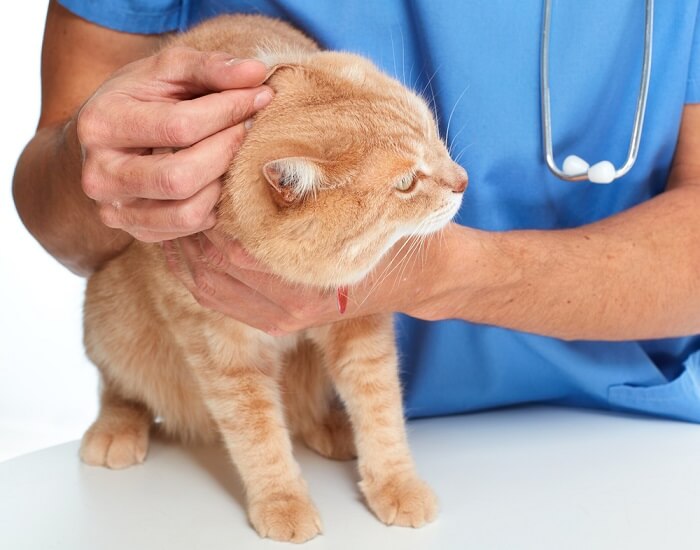
Hearing loss can sometimes be difficult to fully assess in pets, yet changes noted like not coming when called, little or no response to shaking food containers, treat bags, or other familiar noises, could suggest a hearing issue.
Animax and similar brand ointments are generally very well tolerated in kitties. According to the manufacturer, reactions on the skin to its use are extremely rare, and this is typically consistent with most clinical experience.
While Animax can be used to treat ear infections, there are many ear medications that are not safe to use if the tympanic membrane (eardrum) is compromised or ruptured. This is why it is extremely important if a pet is suspected to have an ear infection, to have a veterinarian examine the ear first to assess what medication is most safe to use.
While considered uncommon, the use of ear medications with a steroid, while often necessary to resolve infections and inflammation of the ear canal, can cause a temporary hearing loss. Typically when it occurs, the hearing loss resolves with discontinuation of the ointment.
While hearing loss can sometimes be difficult to fully assess in pets, changes noted like not coming when called, little or no response to shaking food containers, treat bags, or other familiar noises that usually bring your kitty trotting on over to you, could suggest a hearing issue. If you suspect this while using an ear medication, it’s best to discontinue the medication and contact your vet for further guidance.
The use of oral corticosteroids in dogs can commonly lead to side effects including increased thirst, urination, appetite, and panting. These signs are seen far less frequently in cats. Use of topical steroid medications far less often cause these signs in dogs, though increased sensitivities in certain individuals certainly exist. These changes are even more rarely noted in cats.
It is important to note that Animax and similar ointments are not ophthalmic medications and are not intended for use in or around the eyes.
Animax is also not intended as an oral medication. However, accidental licking or ingestion of a small amount of Animax is unlikely to cause concerns. Licking or ingesting topical steroid medications in dogs can sometimes lead to side effects similar to those seen with oral steroid use but in cats these are very uncommon.
If a skin infection or wound is being treated with a topical product like Animax, care should already have been taken to keep a kitty from licking or chewing at the site, to help promote healing. These measures, like using an Elizabethan collar or recovery suit/gown to protect a wound, typically also prevents licking or ingesting a topical product.
If protecting a skin lesion with one of these measures is not possible for some reason, it is generally recommended to at least prevent licking or chewing of an application site for at least 20-30 minutes after applying a product like Animax.
While information is limited in cats specifically, any product containing a steroid should be used with extreme caution in pregnant animals as early parturition/premature birth and congenital abnormalities have been described in dogs and other species.
For human caretakers, the manufacturer does recommend use of disposable gloves or washing hands immediately after applying the product to a pet. It is a common recommendation among veterinarians when applying Animax and similar products to the skin or surface wounds, to use a cotton-tipped applicator or cotton ball which also further reduces contact with your skin.
Animax for Cats Dosage
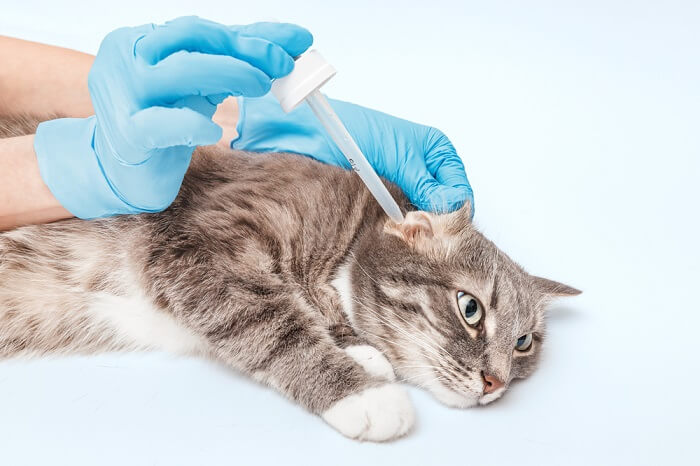
For ear infections, the ointment should be applied in a dropper format, applying the prescribed amount into the deeper folds of the ear canal, and then massaging the ear afterwards to ensure good coverage.
For skin conditions, Animax is typically applied in a very thin coat over the area. Because these ointments can be runny, applying excessive amounts often makes a mess and doesn’t provide additional benefits. Applying a smooth, thin coat using a cotton-tipped applicator or cotton ball is best.
For ear infections, the ointment should be applied in a dropper format, applying the prescribed amount into the deeper folds of the ear canal, and then massaging the ear afterwards to ensure good coverage.
Animax is most often prescribed as a twice daily medication applied every 12 hours, but the frequency of administration can vary a fair amount depending on the severity of the skin or ear condition. Dosage amounts into the ears can also vary. This is why it’s extremely important to only use prescription ointments like Animax under the guidance of an attending licensed veterinarian.
Conclusion
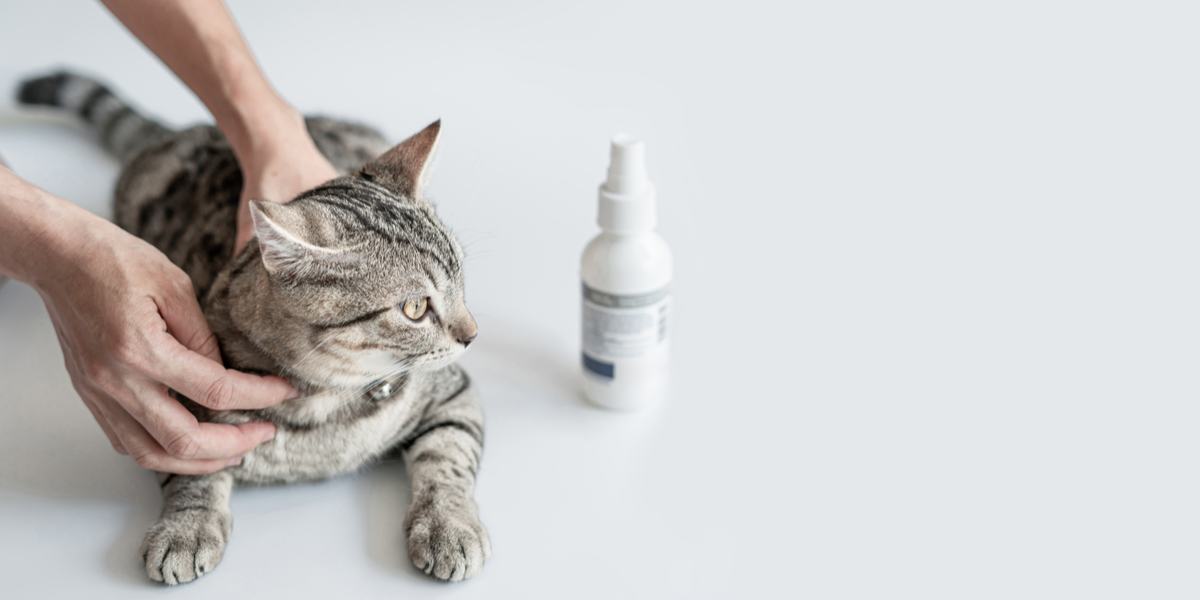
Animax and similar brands for the nystatin, neomycin sulfate, thiostrepton, and triamcinolone acetonide ointment are very commonly used in veterinary care and are generally very well tolerated in cats.
However, these ointments are only intended for more minor wounds or small, localized skin infections and ear infections. It’s always best to consult with your vet before use, especially for concerns with the ears or any generalized skin conditions.
Drug Dosing Disclaimer: We are only able to provide doses for medications that are FDA approved for use in cats and only as the label guidelines dictate. For medications that are used off-label we can only provide guidelines and safety information for use. Safe and appropriate dosing for off-label medications can only be determined by a primary care veterinarian.
We encourage you to work with your veterinarian to determine if a particular medication is appropriate for your cat. Changing or adjusting a dose for your cat on your own without consulting with a veterinarian can carry risk. We do not encourage use of medications prescribed for human use in pets without first consulting with a primary care veterinarian.
Frequently Asked Questions
What is Animax Ointment Used for in Cats?
Animax ointment is commonly used to treat minor surface wounds on the skin, small or localized skin infections or areas of dermatitis, and for uncomplicated ear infections.
Animax is not intended for sole use in the case of larger wounds, deeper infections or abscesses, or more severe ear infections that may involve the middle or inner ear. Animax is also not intended for use in and around the eyes, or for oral use.
What if My Cat Licks Animax Ointment?
While not intended for oral use, if a cat manages to lick Animax off of the skin, this is very unlikely to cause any significant concerns. The ingredients in Animax and similar brands are considered to be well-tolerated, even in the case of a small amount of accidental ingestion.
Side effects of ingesting topical ointments containing a steroid have been uncommonly noted in dogs, but not generally appreciated in cats.
While accidental ingestion is unlikely to cause an issue, it is important to realize that if your kitty is licking the ointment off of a wound or skin lesion, that the ointment is less likely to be effective. If a kitty has access to a skin lesion to lick or chew at it, this can also introduce more infection and delay healing. This is why it is common for veterinarians to recommend an Elizabethan collar, or recovery suit/gown to keep an area protected from self trauma, which can also prevent accidental ingestion of a topical product.
If shielding an application site is not possible for some reason, it is generally recommended to prevent licking or chewing of an affected area for at least 20-30 minutes after application, to allow the ointment to be properly absorbed.
How Long Does it Take for Animax to Work?
Typically, topical ointments like Animax should start having effects against inflamed skin and microbial overgrowth within just 1-2 hours of application. However, noticeable improvement for an ear infection or wound may not be visible to a kitty parent or caretaker for 1-2 days.
Most small wounds, skin lesions, and ear infections for which Animax is used should resolve or nearly resolve within 10-14 days of use. If a skin lesion or ear infection does not show noticeable improvement within that time period, it’s extremely important for your cat’s condition to be rechecked with your primary care veterinarian.
Is Animax the Same as Panalog?
It is! Animax is only one of several brand names for the combination topical ointment containing the drug ingredients nystatin, neomycin sulfate, thiostrepton, and triamcinolone acetonide. Animax is the brand produced by Dechra. Other brands include Quadritop by Henry Schein, Panalog by Zoetis, and Derma-Vet by Med-Pharmex.


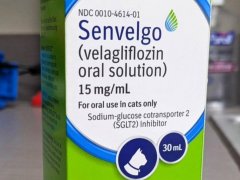





We took our cat into our vet and just wanted her ears cleaned, there was no infection. The vet then put a tube of Entederm into our cat’s ears and squeezed the tube; a large squeeze. That night our cat was vomiting, had severe diarrhea and had blood in her stools and was very ill for four days. I contacted the vet immediately and her assistant said that people also get sick from taking over-the-counter medicines, basically denying that Entederm had anything to do with this illness, but that she would tell the vet. Two days later we had a voicemail telling us that the vet said it wasn’t from this medicine. It HAD to be. We looked online at the possible side effects of this medicine and it listed seven items; “gastrointestinal upset, such as vomiting or diarrhea”, plus our cat had bloody stools. It also said if side effects persist or worsen, consult your veterinarian immediately. We did, but instead of waiting for her call we took our cat to an Emergency Hospital and they took her in and took great care of her. $810 later, the vet finally called and denied that Entederm was the cause. Thankfully our sweet cat is now on the mend and is finally eating six days after taking her to the vet.
Hi Dianna, thank you for sharing. I can hear your need to be heard and I am glad that your cat has recovered. To me, it’s not entirely clear what occurred. I myself have not seen a cat get so systemically ill from topical medications like Animax (Entederm is similar and has the same ingredients), especially when given in the ear.
I have seen cases where pets may lick a topical ointment off and depending on how much gets ingested, you may see some systemic effects of the steroid in the ointment/cream/spray. However, I would say I have seen that more with betamethasone, which is a much more potent steroid than triamcinolone, which is more in the mid to low range of potency.
But of course, being in the ear, licking the product off seems unlikely unless your cat managed to ingest some while grooming her irritated ear the way cats do (by licking their paw then rubbing on their head repeatedly). Maybe if there was a lot of product in the ear, that’s possible.
The most common side effect of any ear medication (which is still rare and I’ve only seen a handful of times) is signs of temporary hearing loss and/or a head tilt. That can be a sign of ototoxicity or that the ear drum was not intact.
Now when reading the side effect section for these products (I included a link here for Animax’s: https://www.dechra-us.com/Files/Files/ProductDownloads/us/animax-ointment-pack-insert.pdf), you’ll note this statement: “SAP and SGPT (ALT) enzyme elevations, polydipsia and polyuria, vomiting, and diarrhea (occasionally bloody) have been observed following parenteral or systemic use of synthetic corticosteroids in dogs.”
The problem with this statement is that it doesn’t apply widely to topical ear medications. It’s describing the general risk of steroids but more specifically oral and injectable (parenteral) forms, where digestive upset like you describe is more of a potential risk. Parenteral can technically include topical things like creams or lotions, but for enough to be absorbed to cause such severe systemic effects is hard to accomplish, even with a large glob of medication.
Objectively, I’d say your cat could have had an unusual sensitivity leading to systemic effects, may have found a way to ingest what was applied by grooming it off/out of her ear if there was some overflow, or the possibility always remains that there still was another cause that no one is aware of.
I’m not surprised your vet didn’t believe the Entederm was responsible, for the same reasons I’ve laid out, because it’s just not something we see despite treating hundreds of pets a year for ear conditions. But I am sorry to hear you did not at least get a better response and willingness to provide care, regardless of cause.